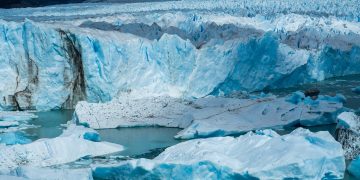The climate crisis continues to unfold with devastating consequences for ecosystems, communities, and the planet at large. Each year, global climate assessments provide an in-depth look at how human activities are reshaping the Earth’s climate systems. The latest report from the Intergovernmental Panel on Climate Change (IPCC), released in 2023, paints a sobering picture of the climate emergency. The report highlights several disturbing trends that demand urgent global action to mitigate further damage and avoid catastrophic outcomes. This article delves into the key findings of the report, focusing on the alarming trends that are emerging in the ongoing battle against climate change.
1. Rising Global Temperatures: A Worsening Trend
One of the most prominent findings of the new climate report is the continued rise in global temperatures, which has far outpaced earlier predictions. Since the late 19th century, the Earth has warmed by approximately 1.2°C (2.2°F), with much of this warming occurring in the last few decades. The report emphasizes that this temperature rise is primarily driven by human activities, particularly the burning of fossil fuels, deforestation, and industrial agriculture.
A. Crossing the 1.5°C Threshold
The most concerning revelation is that the world is on track to exceed the 1.5°C warming threshold, which was set as a critical limit in the Paris Agreement to avoid the most catastrophic effects of climate change. According to the IPCC, without immediate and drastic emissions reductions, global temperatures are expected to rise by 1.5°C as soon as 2030. The report underscores the urgency of keeping global warming well below this threshold to safeguard vulnerable ecosystems, biodiversity, and human livelihoods.
B. Record High Temperatures
The report notes that the last seven years have been the hottest on record, with 2022 alone seeing some of the most extreme heatwaves ever experienced in several parts of the world. This consistent trend in rising temperatures is increasing the frequency and severity of heatwaves, particularly in regions such as South Asia, Europe, and the Middle East. These heatwaves threaten human health, agricultural productivity, and water resources.
2. Extreme Weather Events Are Becoming More Frequent and Severe
Another alarming trend highlighted in the report is the increasing intensity and frequency of extreme weather events. Climate change is disrupting weather patterns, leading to more frequent and severe natural disasters, including hurricanes, wildfires, floods, and droughts.
A. Increasing Intensity of Storms and Hurricanes
The report reveals that tropical storms and hurricanes are intensifying due to warmer sea surface temperatures, which provide more energy for these storms. As a result, regions that were once relatively shielded from severe tropical storms, such as parts of South-East Asia and the Caribbean, are now experiencing more powerful storms, with increased rainfall and higher wind speeds.
The rising number of Category 4 and Category 5 hurricanes in the Atlantic Ocean and the Indian Ocean is particularly concerning. These storms lead to significant loss of life, destruction of infrastructure, and long-lasting economic impacts, especially for developing nations that lack the resources to adapt and recover quickly.
B. Wildfires and Droughts
The increasing global temperature is also contributing to more frequent and intense wildfires, particularly in Southern Europe, Australia, and the western United States. Dry conditions, coupled with rising temperatures, create the perfect environment for wildfires to spread rapidly, threatening both natural ecosystems and human settlements. The new report emphasizes the link between climate change and the expanding risk of wildfires.
Simultaneously, the occurrence of prolonged droughts is affecting regions such as Africa, Asia, and parts of North America. Drought conditions are exacerbating water scarcity, agricultural losses, and food insecurity. These patterns are expected to worsen as global temperatures continue to rise, with potentially devastating consequences for millions of people who rely on agriculture for their livelihoods.
3. Melting Ice Caps and Rising Sea Levels
Perhaps one of the most tangible signs of climate change is the rapid melting of polar ice caps and glaciers. The new climate report paints a grim picture of the state of the world’s ice sheets, which are melting at an accelerated rate due to higher temperatures.
A. Melting of Arctic and Antarctic Ice
The Arctic is warming at more than three times the global average—a phenomenon known as “Arctic amplification.” As a result, the Arctic sea ice has diminished dramatically, with summer sea ice extent reaching record lows. This loss of ice is contributing to a positive feedback loop, as less ice means that the ocean absorbs more heat, accelerating warming even further.
In the Antarctic, the situation is similarly dire, with both the West Antarctic Ice Sheet and the Greenland Ice Sheet experiencing significant melting. The accelerated loss of ice from these regions is contributing directly to sea level rise, which has already increased by 20 centimeters (around 8 inches) since the 1900s.
B. Rising Sea Levels Threaten Coastal Communities
The report highlights that sea levels are projected to rise by 1 to 3 feet (30 to 90 cm) by the end of the century if current trends continue. This will exacerbate the threat to coastal communities and small island nations such as the Maldives, Kiribati, and Tuvalu, which are at risk of being submerged. Many cities located along coastlines—such as Miami, New York, Bangkok, and Shanghai—are also vulnerable to flooding due to rising seas.
The impact of rising sea levels will be particularly devastating for low-lying coastal areas where millions of people live, work, and depend on coastal resources for their livelihoods. The displacement of people from these areas, often referred to as climate refugees, will have profound social, political, and economic consequences.

4. Biodiversity Loss and Ecosystem Collapse
The report stresses that the impacts of climate change are not only threatening human life and infrastructure but also causing unprecedented harm to the world’s biodiversity. Ecosystems across the globe are already undergoing major shifts due to rising temperatures, changing weather patterns, and altered precipitation cycles.
A. Threats to Coral Reefs
Coral reefs, often referred to as the “rainforests of the sea,” are among the most vulnerable ecosystems on the planet. The report reveals that rising ocean temperatures are causing widespread coral bleaching, which weakens corals and makes them more susceptible to disease. If current trends continue, the report warns that coral reefs could be entirely wiped out by the end of the century.
Coral reefs are essential to marine biodiversity, providing shelter and food for thousands of marine species. Their loss would lead to cascading effects on marine ecosystems and the communities that depend on them for food and tourism.
B. Species Extinction and Habitat Loss
In addition to coral reefs, many species of land-based animals and plants are being pushed to the brink of extinction due to habitat loss, changing migration patterns, and rising temperatures. Iconic species such as polar bears, tigers, and elephants are at risk, as well as countless lesser-known organisms that play crucial roles in ecosystems.
The report stresses that ecosystem services—such as pollination, water purification, and carbon sequestration—are also under threat, which will have a direct impact on agriculture, food security, and human well-being.
5. Climate Inequality and Vulnerable Populations
Finally, the report underscores the fact that climate change does not affect all people equally. Vulnerable populations, especially those in developing nations and marginalized communities, are disproportionately impacted by the climate crisis. While developed countries have historically been the largest contributors to greenhouse gas emissions, it is the poorest nations that are bearing the brunt of the effects.
A. Disproportionate Impact on Developing Countries
Low-income countries, particularly in Sub-Saharan Africa, South Asia, and Central America, are facing severe consequences of climate change despite contributing little to the problem. These countries are suffering from extreme heat, droughts, floods, and sea-level rise, which are threatening their food and water security and causing widespread displacement.
B. Climate Justice and Global Inequality
The report calls for urgent climate justice, highlighting the need for wealthier countries to assist developing nations in both mitigation and adaptation efforts. Financial aid, technology transfer, and capacity-building are crucial to helping vulnerable nations cope with the growing impacts of climate change and mitigate the risks they face.
Conclusion: The Urgency of Global Action
The latest IPCC report paints a stark and worrying picture of the state of the planet. From rising temperatures and extreme weather events to melting ice caps and the loss of biodiversity, the findings reveal the devastating effects of climate change that are already underway and set to worsen in the coming decades. The report underscores the urgency of global action to reduce emissions, accelerate the transition to clean energy, and protect vulnerable communities and ecosystems.
The time for action is now. The future of our planet—and the lives of future generations—depends on the choices we make today.





















